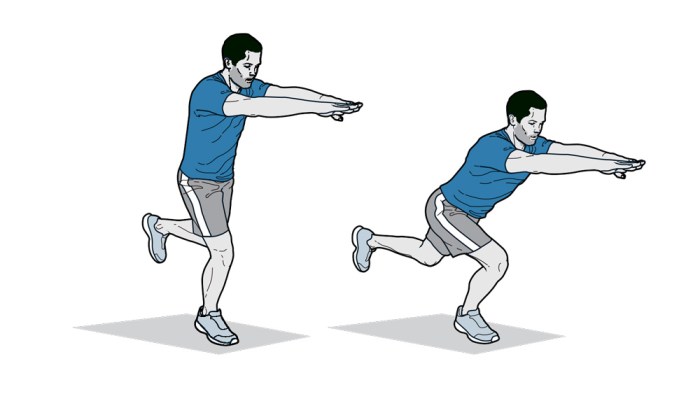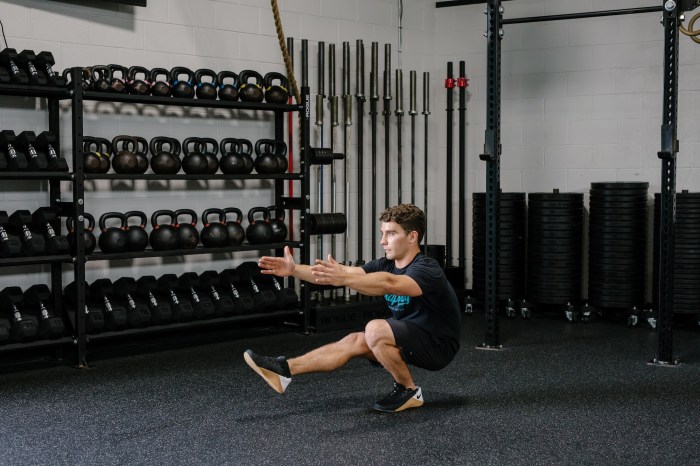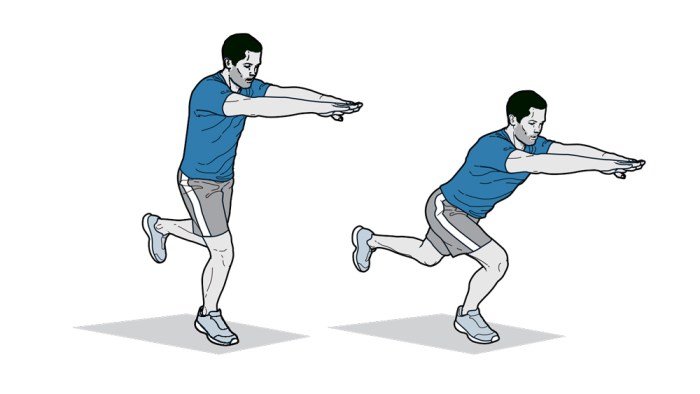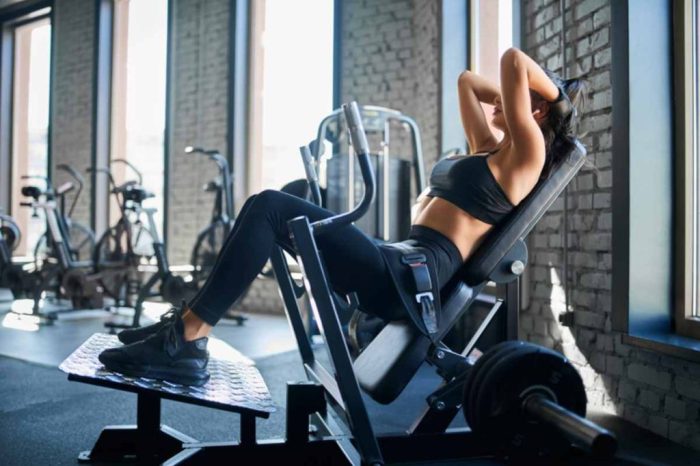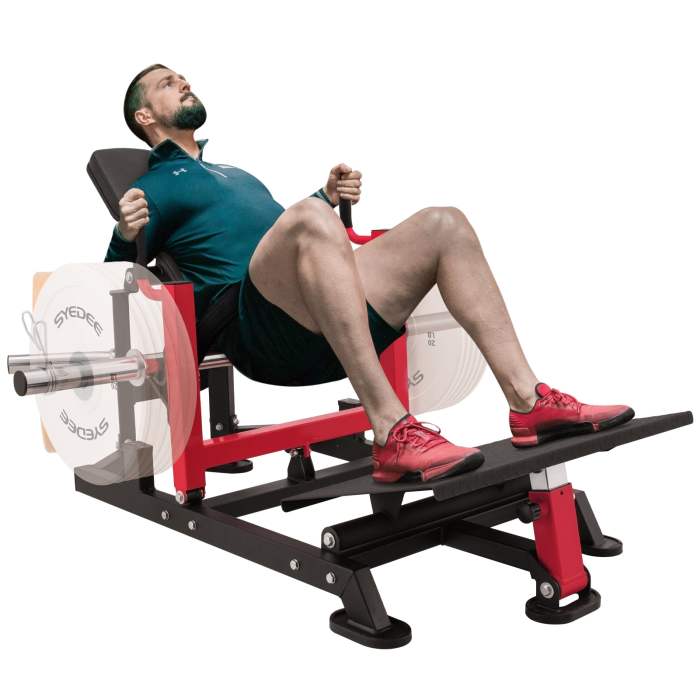Build a Balance Board, a comprehensive guide to understanding and utilizing balance boards for enhanced fitness and well-being. This guide delves into the history, types, benefits, and practical applications of balance boards. From beginner exercises to advanced techniques, we’ll explore the diverse ways to integrate balance boards into your routine, emphasizing safety and optimal performance.
Imagine effortlessly improving your balance, strengthening core muscles, and preventing injuries. This guide will walk you through everything you need to know about creating your own personalized balance board journey.
Introduction to Balance Boards
A balance board is a specialized piece of equipment designed to enhance proprioception and core strength. It provides an unstable platform that challenges the body’s equilibrium, forcing the user to actively engage muscles for balance. This active engagement leads to improved coordination, stability, and overall body awareness.Balance boards have evolved from simple, rudimentary designs to sophisticated tools used in various fields, including physical therapy, athletic training, and general fitness.
Their development reflects a growing understanding of the body’s need for dynamic stability and control.
Types of Balance Boards
Different types of balance boards cater to various skill levels and intended uses. These differences are largely based on the board’s design, surface, and dimensions.
- Wobble Boards: These boards typically feature a flat, slightly concave surface with a wide base. The surface’s slight curvature and flexibility provide a degree of instability, making them suitable for beginners. Wobble boards often come in various sizes and materials, offering a range of difficulty levels for users.
- Balance Discs: Characterized by their circular shape, balance discs offer a unique challenge for maintaining equilibrium. The smaller surface area of the disc compared to a wobble board demands greater control and precision from the user. They are commonly used for advanced balance exercises and core strengthening.
- Balance Platforms: These are often larger and more stable than wobble boards, offering a platform for a wider range of exercises. The larger surface area and a more pronounced curvature offer a controlled challenge to balance and coordination.
Materials Used in Balance Board Construction
The choice of material significantly impacts a balance board’s properties, including its durability, stability, and responsiveness.
- Wood: A traditional and widely used material, wood balance boards provide a solid, natural feel. They are often more affordable than other options and can offer a good level of responsiveness. However, wood may not be as durable as some other materials.
- Plastic: Plastic balance boards are typically lightweight and resistant to moisture, making them suitable for various environments. Their lower cost often makes them a popular choice. However, plastic boards may not provide the same responsiveness or feel as wood.
- Composite Materials: Combining various materials, such as wood and plastic, or using specialized composite materials, allows for balance boards with enhanced stability and durability. These boards can be more expensive but often provide a combination of superior responsiveness, stability, and longevity.
Comparison of Balance Board Types
The table below compares different balance board types based on their dimensions, materials, and intended use cases.
| Type | Dimensions | Materials | Use Cases |
|---|---|---|---|
| Wobble Board | Typically 12-18 inches in diameter, 2-4 inches in height | Wood, Plastic, Composite | Beginner to intermediate users, improving balance, coordination, and core strength |
| Balance Disc | Typically 8-12 inches in diameter | Plastic, Wood, Composite | Intermediate to advanced users, advanced balance training, core strengthening, and improving body awareness |
| Balance Platform | Typically 18-24 inches in diameter, 2-4 inches in height | Wood, Composite | Various skill levels, rehabilitation, strengthening exercises, and improved stability |
Benefits of Using a Balance Board
Balance boards, far from being just a trendy fitness gadget, offer a wide array of physical and cognitive benefits. They challenge your body’s equilibrium, engaging multiple muscle groups and promoting overall well-being. From improving posture to preventing injuries, the benefits are substantial and accessible to individuals of all fitness levels.Balance board exercises require your body to constantly adjust and compensate for instability.
Building a balance board can be surprisingly challenging, but it’s a rewarding project. I’ve been fascinated by the intricate mechanisms in musical instruments lately, especially the detailed breakdown of the Superstition Clavinet, as seen in this great article on superstition clavinet parts revealed. Knowing how those parts work might give you some insight into the kind of precision needed for creating a stable and responsive balance board.
This process strengthens muscles and improves coordination, ultimately leading to enhanced stability and a reduced risk of falls. Furthermore, the mental focus required to maintain balance enhances cognitive function.
Physical Benefits of Balance Board Exercises
Balance board exercises engage a diverse range of muscle groups, working not only major muscle groups, but also smaller stabilizing muscles, which are often neglected in traditional workouts. This multifaceted approach to exercise leads to a significant improvement in overall strength, power, and endurance. The constant challenge of maintaining balance promotes neuromuscular efficiency, meaning the brain and muscles communicate more effectively, leading to improved performance in daily activities.
Furthermore, the dynamic nature of balance board exercises helps to improve proprioception, or the body’s awareness of its position in space. This heightened awareness reduces the risk of injuries by enabling a quicker and more accurate response to changes in body position.
Cognitive Benefits of Balance Board Training
Balance board training is not just about physical strength; it also significantly impacts cognitive function. Maintaining balance requires constant adjustments and reactions, which in turn improves reaction time, focus, and concentration. This focused attention required for balance training translates to enhanced cognitive function in other areas of life, such as multitasking and problem-solving. The intricate interplay between the brain and body during balance board exercises fosters neuroplasticity, the brain’s ability to reorganize itself by forming new neural connections.
Building a balance board can be surprisingly challenging, requiring focus and precision. It’s a bit like navigating the complexities of life, isn’t it? Just like the subtle shifts in perspective explored in Shannen Moser’s beautiful track, ” The Sun Still Seems to Move “, finding equilibrium is key. Ultimately, mastering the board, like mastering any personal challenge, is rewarding.
This process enhances cognitive flexibility and adaptability.
Improvements in Posture and Stability
Consistent balance board training leads to significant improvements in posture and stability. The exercises strengthen core muscles, which are crucial for maintaining proper posture and spinal alignment. By engaging these muscles, balance boards promote better posture and reduce the risk of back pain. Improved stability, gained through consistent balance board use, translates to better performance in daily activities like walking, running, and even sitting.
This improved stability can help prevent falls, especially in older adults or individuals with balance issues.
Role of Balance Boards in Injury Prevention
Balance boards play a crucial role in injury prevention by strengthening the muscles that support joints and improve overall stability. By engaging these stabilizing muscles, balance boards reduce the risk of injuries associated with falls and other physical activities. This proactive approach to injury prevention can lead to a healthier, more active lifestyle by minimizing the risk of future injuries.
Balance boards are particularly beneficial for athletes, helping them to prevent common sports injuries.
Balance Board Exercises and Their Benefits
| Exercise | Muscles Targeted | Benefits |
|---|---|---|
| Single-leg stance | Calves, hamstrings, quadriceps, core, gluteus medius, and gluteus maximus | Improved balance, stability, and proprioception. |
| Forward/backward walking | Lower body muscles, core, and ankles | Enhanced balance, strength, and coordination. |
| Side-to-side walking | Inner and outer thighs, core, and ankles | Improved balance, stability, and coordination, especially for lateral movement. |
| Heel-toe walking | Calves, hamstrings, quadriceps, and ankles | Improved ankle stability, posture, and gait. |
| Heel-toe walking with a twist | Core muscles, hip abductors and adductors, and lower body | Improved balance, stability, and coordination. |
| Standing on one leg with board | Legs, core, and glutes | Improved balance, stability, and strength. |
Exercises and Training with Balance Boards
Balance boards are more than just fun toys; they’re powerful tools for improving balance, coordination, and overall fitness. They challenge your body’s equilibrium, engaging muscles you might not typically use in everyday activities. This section delves into various exercises suitable for different skill levels, offering routines for beginners and advanced practitioners alike.Mastering balance board exercises requires patience and consistency.
Gradually increasing difficulty and incorporating progressive exercises is key to maximizing results and minimizing the risk of injury. Focus on controlled movements and proper form to reap the full benefits of balance board training.
Beginner-Friendly Balance Board Exercises
Consistent practice with basic exercises is crucial for building a solid foundation on the balance board. These initial steps will help you gain confidence and control before progressing to more complex maneuvers. Begin with short sessions, gradually increasing duration as you become more comfortable.
- Static Holds: Standing on the board with feet shoulder-width apart, maintaining a neutral posture. Focus on maintaining balance for a set duration, increasing the time as your balance improves. This exercise activates core muscles and strengthens your stabilizing muscles.
- Forward/Backward Slides: Gently glide the board forward and backward, keeping your core engaged and your posture upright. This exercise enhances balance and coordination while working the leg muscles.
- Side-to-Side Slides: Moving the board from side to side, maintaining balance by engaging core muscles. Practice smooth transitions, increasing the amplitude as you improve your stability. This improves lateral balance and hip stability.
- Heel-Toe Touches: Bringing one heel to the opposite toe while standing on the board, maintaining balance with controlled movements. This exercise strengthens ankle stability and improves balance.
Advanced Balance Board Training Routines
Once you’ve mastered the fundamentals, you can elevate your training with more challenging exercises. Advanced routines demand greater stability, coordination, and core strength. Gradually increasing the difficulty is vital to avoid injury and maximize gains.
- Single-Leg Stands: Standing on one leg while balancing on the board. Maintain a neutral spine and focus on engaging core muscles. Progress to longer durations as stability improves.
- Squats on the Balance Board: Performing squats while maintaining balance on the board. This exercise targets multiple muscle groups, including legs, core, and glutes, while significantly enhancing balance.
- Push-ups and Dips on the Balance Board: Performing push-ups and dips while balancing on the board, challenging both upper and lower body strength and stability. Start with a stable base and gradually progress to more challenging positions.
- Dynamic Movements: Incorporating dynamic movements like twisting, turning, and pivoting on the balance board. These exercises increase agility, coordination, and stability. Focus on smooth and controlled transitions.
Progression for Balance Board Exercises
Progressing from beginner to advanced exercises is a gradual process. Start with shorter durations and simple movements, then gradually increase the duration, difficulty, and complexity of the exercises.
- Increasing Duration: Extend the time spent performing each exercise as balance improves.
- Increasing Difficulty: Move to more challenging positions, such as single-leg stands or dynamic movements.
- Adding Resistance: Incorporate resistance bands or weights to make the exercises more challenging and build strength.
Balance Board Exercise Chart
This table illustrates the various balance board exercises and the corresponding muscle groups they target.
| Exercise | Muscle Groups | Description |
|---|---|---|
| Static Holds | Core, Leg, Ankle | Maintaining balance on the board for a set time. |
| Forward/Backward Slides | Core, Legs | Gliding the board forward and backward. |
| Side-to-Side Slides | Core, Legs, Hip | Moving the board from side to side. |
| Heel-Toe Touches | Ankle, Core, Leg | Bringing one heel to the opposite toe while standing on the board. |
| Single-Leg Stands | Core, Leg, Hip | Balancing on one leg on the board. |
| Squats on the Balance Board | Legs, Core, Glutes | Performing squats while maintaining balance on the board. |
Safety Considerations for Balance Board Use
Balance boards, while offering numerous benefits for fitness and balance, require careful consideration of safety. Understanding potential risks and implementing proper precautions is crucial for maximizing the benefits and minimizing the risk of injury. This section delves into essential safety measures to ensure a safe and effective balance board experience.
Potential Risks and Injuries
Balance board use, like any physical activity, carries the potential for injury. Common risks include falls, sprains, strains, and joint pain. The instability inherent in balance board exercises can lead to unexpected movements and falls, especially for beginners. Improper technique, inadequate warm-up, or using an unsuitable board can further increase the risk. Injuries can range from minor discomfort to more serious conditions requiring medical attention.
Importance of Warm-up and Cool-down Routines
A proper warm-up before balance board exercises is essential to prepare the muscles and joints for the demands of the activity. This helps prevent injuries by increasing blood flow to the muscles, increasing flexibility, and improving range of motion. A dynamic warm-up, incorporating movements similar to those used in balance board exercises, is particularly beneficial. Similarly, a cool-down after exercise is equally crucial to gradually return the body to its resting state.
This helps prevent muscle soreness and stiffness. A cool-down routine can include static stretching, holding each stretch for 15-30 seconds.
Choosing the Right Balance Board
Selecting a balance board appropriate for your fitness level and needs is vital. Beginners should opt for boards with a wider base and more stable construction. As skills improve, users can progressively choose boards with smaller bases and greater challenges. Consider factors like board size, material, and weight capacity to ensure the board’s suitability. A board that’s too unstable or too challenging for a user’s current abilities can increase the risk of injury.
Proper Form and Technique
Maintaining correct form and technique during balance board exercises is paramount to prevent injuries. For example, when performing a simple stance on the board, ensure your feet are positioned evenly on the board, and your weight is distributed evenly. Focus on maintaining a neutral spine and engaging core muscles for stability. Practice slowly, and gradually increase the difficulty as your balance improves.
Learning from a qualified instructor can greatly assist in acquiring proper form and technique.
Building a balance board can be surprisingly challenging, requiring focus and a bit of practice. It’s a great way to improve your core strength, but sometimes I need a mental break, like when I’m listening to Pusha T discuss his Drake diss on The Breakfast Club. Pusha t discusses drake diss on the breakfast club listen is a fascinating look into the rap game, but nothing beats the satisfying feeling of mastering a balance board, though.
Definitely a good way to end a day.
Table of Potential Balance Board Injuries and Prevention Strategies
| Injury | Causes | Prevention |
|---|---|---|
| Sprains/Strains | Sudden twisting movements, improper form, inadequate warm-up, excessive force on joints. | Proper warm-up, gradual progression in difficulty, maintaining proper form, listening to body signals. |
| Falls | Loss of balance, lack of stability, improper technique, poor board selection. | Thorough warm-up, proper technique instruction, appropriate board selection, cautious progression in exercises. |
| Muscle Soreness | Overexertion, inadequate warm-up, insufficient cool-down. | Proper warm-up and cool-down, gradually increasing exercise intensity, listening to body signals, appropriate rest periods. |
| Joint Pain | Overuse, improper form, lack of stability, poor board selection. | Proper form, appropriate board selection, gradual progression, rest between sessions. |
| Wrist Injuries | Improper landing after a fall, awkward movements. | Proper landing techniques, appropriate board selection, maintaining proper form, using wrist support if needed. |
Balance Board Selection and Considerations
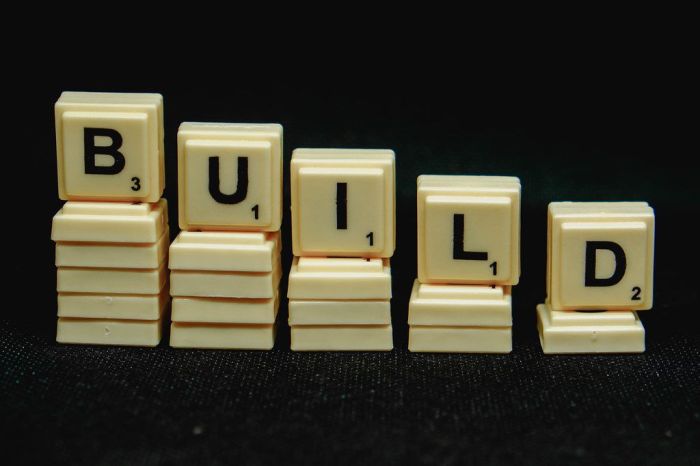
Choosing the right balance board is crucial for maximizing its benefits and ensuring a safe and effective workout. Factors like board size, surface, stability, and user comfort play a significant role in the overall experience. This section delves into the key considerations for selecting a balance board that aligns with individual needs and fitness goals.Selecting the correct balance board involves careful consideration of various factors.
Understanding these elements ensures a positive experience, optimizing results, and minimizing the risk of injury. A well-chosen board can enhance balance, coordination, and overall fitness.
Factors to Consider When Purchasing a Balance Board
Careful consideration of factors like size, surface, stability, and user comfort is crucial in selecting the optimal balance board. These factors directly impact the effectiveness and safety of your workouts. The right board will facilitate progress and reduce the risk of discomfort or injury.
- Board Size: Balance boards come in various sizes. Larger boards generally provide more stability, making them suitable for beginners or those with limited balance. Smaller boards challenge balance more, and are better suited for experienced users. A larger board will be less challenging than a smaller board. The size of the board is a key consideration when selecting a board for your needs.
- Surface Characteristics: The surface of the board significantly impacts user experience. A smooth surface provides a more stable platform for beginners, while a textured or slightly uneven surface offers a greater challenge and promotes better balance. The board surface should be non-slippery and should provide adequate grip.
- Board Stability: Stability is paramount. A highly stable board is essential for beginners and those with balance concerns. A more stable board will allow for more effective and controlled exercises.
- User Comfort: The board’s size, shape, and material should promote comfort during extended use. A comfortable board encourages adherence to the workout routine. Consider the material and the design of the board to ensure user comfort.
Comparing Different Balance Board Brands and Models
Numerous brands and models of balance boards are available, each with unique features and price points. Evaluating different brands and models is essential to selecting the best fit for your needs.
| Brand | Model | Features | Price |
|---|---|---|---|
| BalancePro | ProBalance 10 | Large platform, adjustable height, non-slip surface, lightweight construction | $129.99 |
| StabilityBoards | BalanceMaster 5 | Ergonomic design, textured surface, adjustable tilt, durable construction | $159.99 |
| FitForce | FlexiBoard 2.0 | Compact size, versatile exercises, lightweight, portable | $99.99 |
| ActiveCore | ZenBoard | Smooth surface, excellent stability, advanced tilt adjustment, suitable for experienced users | $199.99 |
This table provides a brief overview of some balance board models. It’s crucial to research individual models further to find the most suitable option based on specific needs and preferences.
Tips for Choosing a Balance Board Based on Individual Needs and Goals
Selecting the right balance board depends on the individual’s needs and fitness goals. Considering factors like experience level, fitness level, and desired intensity is essential.
- Beginners: Opt for a larger, more stable board with a smooth surface to build confidence and balance. A larger board will reduce the challenge for beginners.
- Intermediate Users: A board with a textured surface and adjustable tilt provides a greater challenge, encouraging further development of balance and coordination skills. Intermediate users can benefit from a textured surface.
- Experienced Users: A smaller, less stable board with a textured surface can offer a more demanding workout. Advanced users should look for boards with advanced tilt adjustments to maximize the benefits.
Balance Board Applications: Build A Balance Board
Balance boards aren’t just for fitness enthusiasts; they offer a wide range of applications across diverse fields, from rehabilitation to sports training. Their versatility stems from their ability to challenge and improve balance, coordination, and proprioception – the body’s awareness of its position in space. Understanding these applications can help you tailor balance board use to specific needs and goals.Beyond general fitness, balance boards can be effectively integrated into various routines and activities.
Their adaptability makes them a valuable tool for individuals seeking to enhance physical performance, improve rehabilitation outcomes, or simply enhance their daily stability.
Balance Board Use in Rehabilitation and Therapy
Balance boards are increasingly utilized in physical therapy and rehabilitation programs. They provide a dynamic platform for practicing balance and coordination, crucial for individuals recovering from injuries or dealing with conditions that affect these abilities. Exercises on a balance board can help re-establish neuromuscular control, improve joint stability, and enhance functional movement patterns.For example, individuals recovering from stroke or knee injuries can benefit from targeted exercises on a balance board.
These exercises can improve balance and coordination, ultimately leading to better functional outcomes and a faster recovery.
Balance Board Use in Sports Training
Balance boards are gaining traction in sports training, as they can be used to improve agility, coordination, and proprioception. Athletes in various sports, including basketball, soccer, and tennis, can benefit from balance board exercises to enhance their performance.By incorporating balance board exercises into their training routine, athletes can improve their reaction time, body awareness, and balance during high-speed movements.
This can lead to better control and precision in sports-specific skills.
Balance Board Use in Fitness Routines
Balance boards can be a valuable addition to any fitness routine, offering a low-impact way to improve core strength, balance, and coordination. They provide a challenging and engaging workout for all fitness levels, from beginners to advanced users.Including balance board exercises in a fitness routine can contribute to improved core strength, improved balance, and enhanced body awareness. This is especially beneficial for individuals looking to strengthen their core muscles without putting too much strain on their joints.
Progressive exercises can be designed to cater to individuals at various fitness levels.
Balance Board Use in Everyday Life, Build a Balance Board
Balance boards can be integrated into everyday life to improve balance and coordination, enhancing stability and preventing falls, particularly for older adults. They provide a practical tool to improve overall body awareness and proprioception. Simple exercises can be done at home or in the office, making it easier to incorporate into daily routines.For example, incorporating balance board exercises into daily routines can enhance overall stability and coordination, which is especially beneficial for older adults, who often experience a decline in these areas.
This can translate to reduced risk of falls and increased independence in daily activities.
Table of Balance Board Applications and Benefits
| Application | Benefits | Examples |
|---|---|---|
| Rehabilitation/Therapy | Improved balance, coordination, joint stability, functional movement | Post-stroke exercises, knee injury recovery |
| Sports Training | Enhanced agility, coordination, proprioception, reaction time | Basketball drills, soccer agility training, tennis balance drills |
| Fitness Routines | Improved core strength, balance, coordination, body awareness | Plank variations on a balance board, squats on a balance board |
| Everyday Life | Improved balance, reduced fall risk, enhanced stability, increased independence | Standing on a balance board while brushing teeth, incorporating balance board exercises into office routines |
Advanced Techniques and Variations

Taking your balance board training to the next level involves exploring advanced techniques and variations. This allows you to challenge your stability, build core strength, and enhance your overall fitness routine. These advanced exercises push your body’s limits, leading to faster progress and more pronounced results.
Advanced Balance Board Exercises
Mastering balance board exercises requires a gradual progression from basic to advanced techniques. This progression allows for a safer and more effective learning curve. Building strength and control in the basic movements paves the way for the more demanding advanced exercises.
- Single-Leg Exercises: Single-leg exercises on a balance board are a critical component of advanced balance training. These exercises significantly improve single-leg strength and proprioception. Examples include single-leg squats, lunges, and calf raises, performed while maintaining balance on the board. These exercises challenge your body’s ability to maintain equilibrium and coordinate muscle groups.
- Dynamic Movements: Dynamic movements such as hopping, jumping, and lateral shuffling on a balance board enhance coordination and agility. Incorporating dynamic movements increases cardiovascular fitness while further challenging your body’s stability and balance. These movements are great for athletes or those seeking a more challenging fitness routine.
- Weighted Exercises: Incorporating weights during balance board exercises adds resistance and significantly increases the challenge. Examples include holding dumbbells while performing squats or lunges on the board. Weighted exercises are a fantastic way to enhance strength training and build muscle mass while promoting balance.
- Plyometrics: Plyometric exercises on a balance board, such as jump squats and lateral bounds, build explosive power and agility. This is a highly effective approach for athletes and those aiming to improve their athletic performance. These exercises significantly improve lower body strength and power.
Incorporating Balance Boards into Existing Routines
Integrating balance board exercises into your existing fitness regimen is a valuable way to add variety and challenge. This ensures a holistic and effective workout routine.
- Warm-up: Begin with 5-10 minutes of light cardio and dynamic stretching before using the balance board. This prepares the muscles for the workout and reduces the risk of injury.
- Circuit Training: Incorporate balance board exercises into a circuit routine, alternating between strength training exercises and balance board work. This method allows you to maximize your workout’s effectiveness. This approach helps to increase muscular endurance and stability.
- Yoga and Pilates: Balance boards can be a useful tool for yoga and Pilates practitioners. Incorporate balance board work into your yoga flow to challenge balance and stability. This approach can add a new dimension to your yoga practice. For example, holding a plank pose on the board adds significant complexity and engages the core muscles more effectively.
Modifying Exercises for Different Fitness Levels
Adjusting exercises to suit different fitness levels is crucial for maximizing the benefits of balance board training. This ensures a safe and effective workout for everyone.
- Beginner Modifications: Beginners should start with simple exercises, such as standing on the board and gradually progressing to more complex movements. For example, holding a static pose on the board can be a great start for beginners. Modifications for beginners include performing exercises with hands on a stable surface or using support to maintain balance.
- Intermediate Modifications: Intermediate users can incorporate weighted exercises or more dynamic movements. This adds complexity and intensity to the training. Examples include performing lunges or squats while holding light weights.
- Advanced Modifications: Advanced users can perform more challenging exercises, such as single-leg jumps or plyometrics. This is a great way to challenge your limits and maximize your training potential.
Advanced Balance Board Exercises and Benefits
| Exercise | Benefits | Modifications |
|---|---|---|
| Single-Leg Squat | Improved single-leg strength, balance, and proprioception. | Start with a stable surface, progress to a balance board. |
| Weighted Lunges | Increased strength, balance, and muscle endurance. | Start with light weights and progress to heavier weights. |
| Dynamic Hopping | Improved agility, coordination, and cardiovascular fitness. | Start with short hops and progress to longer hops. |
| Plyometric Jump Squats | Enhanced explosive power, coordination, and lower body strength. | Reduce the height of the jump or use a lower surface. |
Last Recap
In conclusion, building a balance board routine is a journey of self-discovery and empowerment. From selecting the right board to mastering various exercises, this guide provides a structured approach to enhancing your physical and cognitive well-being. Remember to prioritize safety, listen to your body, and enjoy the rewarding process of incorporating balance board training into your lifestyle. So, get ready to build your balance board and experience the transformative power of balance training!

